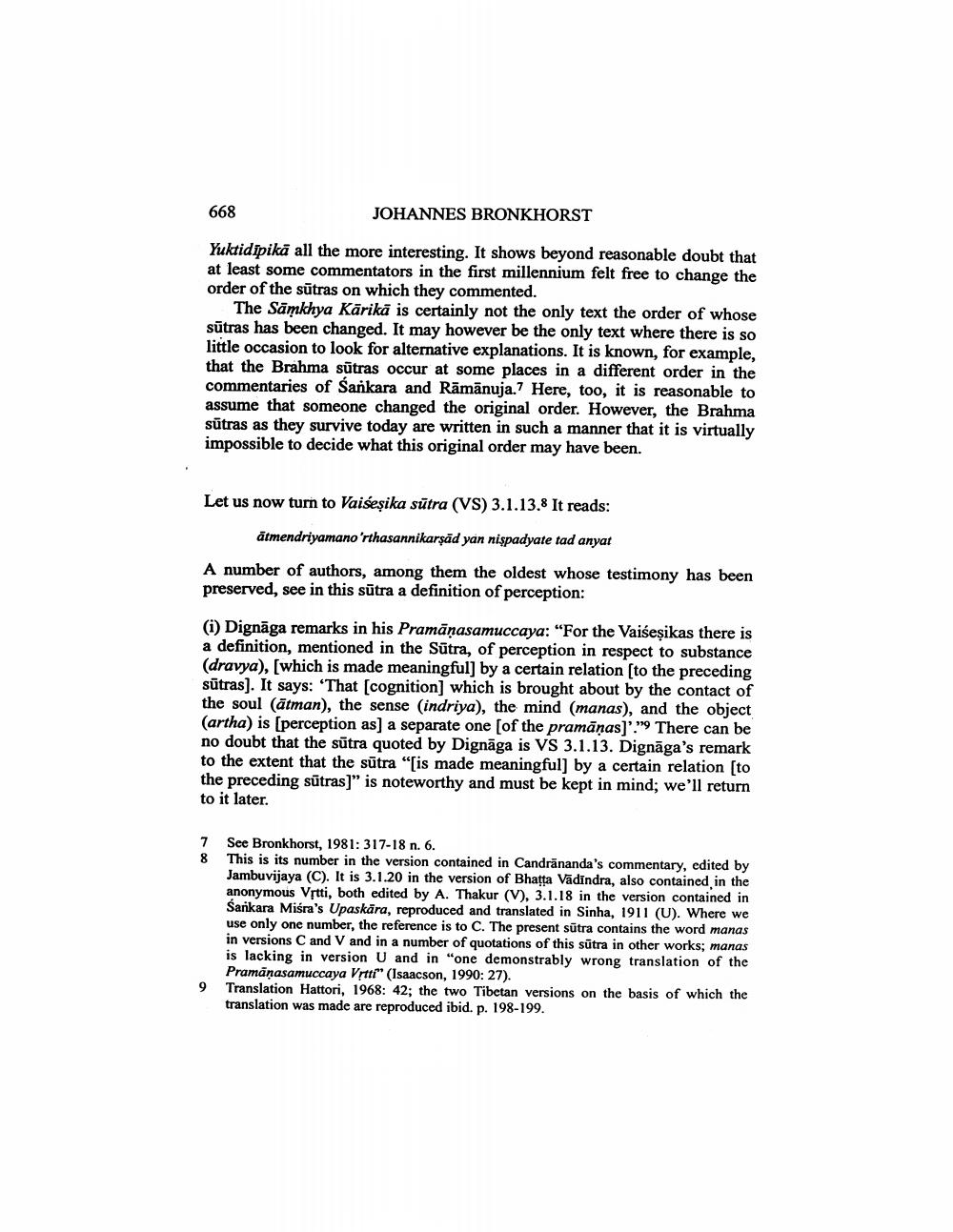Book Title: Once Again Vaisesika Sutra 3 1 13 Author(s): Johannes Bronkhorst Publisher: Johannes Bronkhorst View full book textPage 4
________________ 668 JOHANNES BRONKHORST Yuktidipika all the more interesting. It shows beyond reasonable doubt that at least some commentators in the first millennium felt free to change the order of the sutras on which they commented. The Samkhya Kärikā is certainly not the only text the order of whose sūtras has been changed. It may however be the only text where there is so little occasion to look for alternative explanations. It is known, for example, that the Brahma sutras occur at some places in a different order in the commentaries of Sankara and Ramanuja.7 Here, too, it is reasonable to assume that someone changed the original order. However, the Brahma sūtras as they survive today are written in such a manner that it is virtually impossible to decide what this original order may have been. Let us now turn to Vaiseṣika sutra (VS) 3.1.13.8 It reads: ätmendriyamano'rthasannikarṣād yan niṣpadyate tad anyat A number of authors, among them the oldest whose testimony has been preserved, see in this sūtra a definition of perception: (i) Dignaga remarks in his Pramāṇasamuccaya: "For the Vaiseṣikas there is a definition, mentioned in the Sutra, of perception in respect to substance (dravya), [which is made meaningful] by a certain relation [to the preceding sūtras]. It says: "That [cognition] which is brought about by the contact of the soul (atman), the sense (indriya), the mind (manas), and the object (artha) is [perception as] a separate one [of the pramāṇas]'." There can be no doubt that the sutra quoted by Dignaga is VS 3.1.13. Dignaga's remark to the extent that the sutra "[is made meaningful] by a certain relation [to the preceding sutras]" is noteworthy and must be kept in mind; we'll return to it later. 7 See Bronkhorst, 1981: 317-18 n. 6. 8 This is its number in the version contained in Candrananda's commentary, edited by Jambuvijaya (C). It is 3.1.20 in the version of Bhaṭṭa Vadindra, also contained in the anonymous Vṛtti, both edited by A. Thakur (V), 3.1.18 in the version contained in Sankara Miśra's Upaskāra, reproduced and translated in Sinha, 1911 (U). Where we use only one number, the reference is to C. The present sutra contains the word manas in versions C and V and in a number of quotations of this sūtra in other works; manas is lacking in version U and in "one demonstrably wrong translation of the Pramanasamuccaya Vṛtti" (Isaacson, 1990: 27). 9 Translation Hattori, 1968: 42; the two Tibetan versions on the basis of which the translation was made are reproduced ibid. p. 198-199.Page Navigation
1 2 3 4 5 6 7 8 9 10 11 12 13 14 15 16 17
